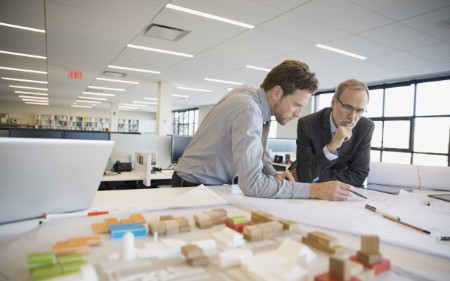
Chapter 1
Preparing for the next revolution
The implications are critical. In a world shaped by exponential change, because everything happens so much faster, events that seem far-fetched can suddenly become reality.
Today it’s astonishing that a start-up brand can dominate a US grocery category five years after its launch. Tomorrow, it could happen in five months. In the early stages of change, trends can look linear. It’s only when the compound multiplier takes affect that the curve accelerates away.
If you don’t adapt your thinking, and rely on a linear mindset, you’ll miss trends that suddenly take off, creating threats or opportunities that you either hadn’t imagined, or that seemed too implausible.
We’re all aware of some big, global trends that will reshape the consumer, from the changing global climate, to the rise of the emerging-market middle classes, to the rapidly aging populations of the developed world.
But what about the future ubiquity of artificial intelligence and machine learning, the coming advances in neural processing and synthetic foods? What impact could they have? When will they achieve critical mass? What will happen when multiple different exponential trends collide with each other, leveraging their impact in extraordinary ways?
Focus on too narrow a set of assumptions and your perspective on the future will be too limited.
Stress test every assumption
The leaders who create profitable growth will be those who think about the future in a different way.
They will explore the radically different ways people might live and consume, and imagine how different trends could affect each other. They will use the insights from the future worlds they model to “stress test” all their assumptions.
Three key questions for leaders endure: What will consumers value? What will you change in your organization to meet those needs? How will you lead that transformation? But it’s time to approach these questions differently:
How can you create a better understanding of future consumer needs by modelling the worlds they will live in?
How can you use that modelling process to stress-test your business against what it will take to succeed in those future worlds?
How can you use the learnings from that stress-testing to actively shape the future in your favour?
Address those questions and you can design better ways of doing business that will make your business more relevant to changing consumers. You can take bolder actions that will drive the right transformation faster.
The ability to adapt to whatever is happening now will always be important. But success in business – as in so many other walks of life, from politics to sport – is about anticipating what might happen next; about ‘reading the game’.

Chapter 2
Hacking the future consumer
We’re helping our clients to change the way they think about the future and, by implication, the actions they need to take now, in the present.
At a series of collaborative hackathon events, we’re exploring a wider and deeper perspective on what the future might be like in key global cities.
- How might people shop, play and work?
- How will they live, eat, stay healthy, move around, and connect?
- What are the deep implications of over 100 change drivers – from the applications of AI and robotics to wider shifts in social structures and consumer aspirations?
As examples of the future states we’ll be exploring, we’ve listed below some probable, possible and plausible scenanios and some questions that may arise from them.
Probable
As more products and services become commoditized, consumers are putting increasing value on experiences. Luxury consumer brands and many mass market retailers understand this already, and are constructing new customer environments driven by brand experience. But what if players from less obvious categories – like cleaning products or personal hygiene – started to turn shopping into ‘retailtainment’? Could these less desirable or emotionally engaging categories create profitable opportunities to re-engage consumers and build loyalty?
If retail was more fun, when would you pay to shop?
Possible
A deeper shift to a culture where consumers pay to access products and services that today they would own. It happens already with transport, workspaces and media; a shift to categories like clothing and technology is possible.
How will you serve consumers who buy almost nothing?
Plausible
People will share data about every aspect of their lives with an ecosystem of companies from convergent sectors – such as tech, entertainment and health. The result: they lead healthier lives and also help to reduce the social cost of poor health. Attitudes that are roadblocks to innovation today – such as consumer concerns about data privacy – could transform. Keeping your data private might become an act of gross selfishness. Companies could shape value propositions that don't exist today.
When everyone shares everything, how do you create value from data?
Discover the questions we're asking to explore these probable, possible and plausible future scenarios, and the implications for consumer products and retail businesses:
CPR leaders will need to ask themselves "what if?" questions such as these, and consider whether such scenarios are probable, possible or plausible, in order to prepare their businesses for the consumers of the future.

Chapter 3
Finding a different way to navigate
The future will be defined by changes that are beyond any one organization’s control. But if you can challenge all your assumptions about what the world might be like, you can design a profitable space for your future-business, and then use that insight to change your organization now.
There isn’t a fixed roadmap you can follow, because nobody knows the terrain. And there isn’t a compass to guide you, because there is no fixed destination that can act as a ‘true north’. You’ll have to create a different set of navigational tools.
These are the most important challenges:
Put the needs of the consumer first (really). To sustain profitable growth, look beyond the constant pressure on margins. Avoid compromising your purpose. Put the consumer at the center of every decision.
Forget the ‘global consumer’. Change will be messy. Understand the similarities and differences across regions and cities.
Do whatever it takes to make your organization super-agile. You’ll need to change course as the world changes – which it will, all the time. Be clear about your agreed strategic priorities across the organization. Empower managers to make fast decisions. Invest in the analytics technologies and the people needed to identify where investment can unlock growth.
Think big. Start small. Scale fast. Exponential trends play out with bewildering speed; internal organizational change can be frustratingly slow. So build an ecosystem that can help you seize opportunities faster.
Understand where value will be created. Speed, platform and trust will always matter. But scale needs to be defined differently. Analyze your P&L to identify where scale is a benefit. Consider the balance between the value created by scale, agility and localization.
Balance what it takes to be relevant to the consumer and relevant to your shareholders. If it’s not profitable, it’s not sustainable. Develop an “and…” mindset. Balance short-term and long-term actions, growth and cost-cutting, innovation and efficiency, centralization and decentralization. a
Again, stress test every assumption. Challenge complacency. The implausible can suddenly become reality. Don’t rely on surveying consumers or executives to understand how the world might change and what the impact could be. Cast your net wider – talk to disruptive thinkers, futurists and pioneers, people who think differently.
Design your future now
The tools that guided leaders through a linear world are not fit for an exponential one. They imply that the future is knowable, that business transformation can unfold in a largely predictable way, with clear milestones that lead to a destination just over the horizon.
They also tend to over-value what an organization achieved in the past: baggage can feel too much like useful heritage. Organizations need to find a better balance between protecting what they have today and investing in what they need to become.
To underline the point, we’re not talking about predicting a distant future; we’re talking about how to change your organization now, so it’s relevant today and into the future.
It’s about developing a new mindset, opening your imagination to the unexpected and seemingly implausible, and stress-testing every single assumption you have about the scope and pace of change. The future is uncertain and constantly evolving. But it’s exciting and profitable for those who start to adapt now. How will you equip yourself to lead?
Resumen
Consumer products and retail companies can thrive in a period of accelerating change by modelling alternative consumer ‘future-worlds’ and using them to stress-test every part of their business, now.

